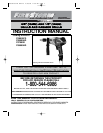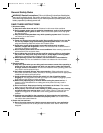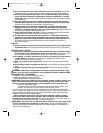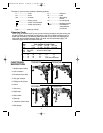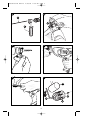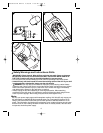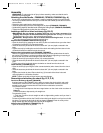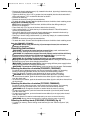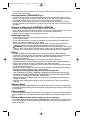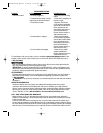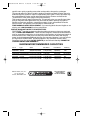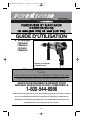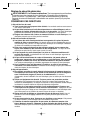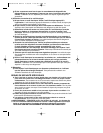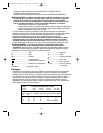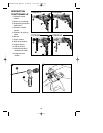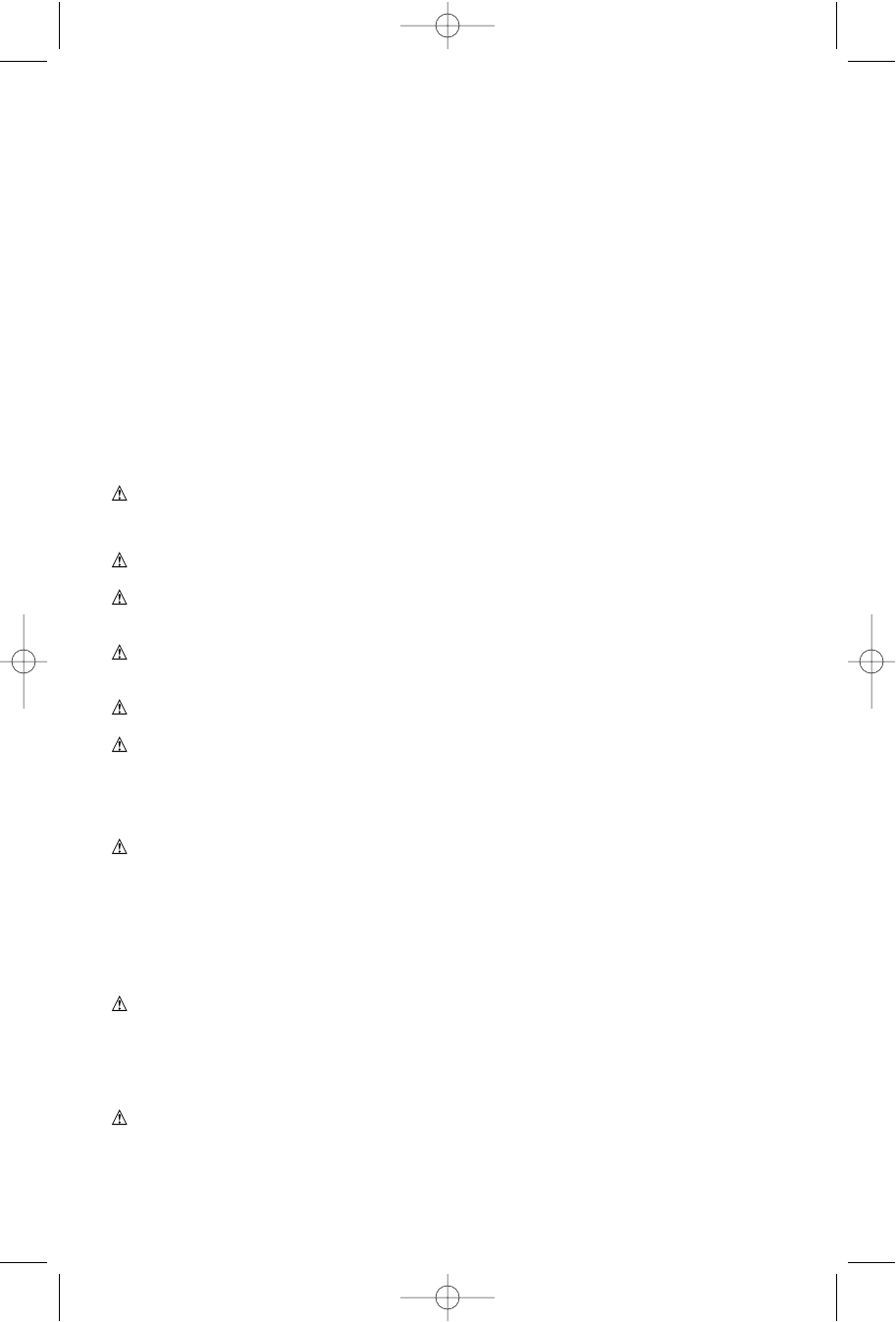
8
• Remove the chuck retaining screw (15), located in the chuck, by turning it clockwise using
a screwdriver (lefthand thread).
• Tighten an Allen key (16) of 1/4” or greater size (not supplied) into the chuck and strike it
with a soft hammer (17) in a clockwise direction as shown
• Remove the Allen key.
• Remove the chuck by turning it counterclockwise.
• To attach the chuck, screw it onto the spindle and secure it with the chuck retaining screw.
Keyed chuck (FS7000D)
(fig. G)
NOTE: Before attempting to remove chuck, shift the drill into the drilling mode (not
hammer, if so equipped).
• Place chuck key (7) in any one of the three holes in the chuck (6).
• Using a soft hammer (17), strike the key in a clockwise direction. This will loosen the
screw (15) inside the chuck.
• Open chuck jaws fully and remove the chuck retaining screw, located in the chuck, by
turning it clockwise using a screwdriver (lefthand thread).
• Place key in chuck. Using a soft hammer (17), strike key sharply in a counterclockwise
direction.
• Remove the chuck by turning it counterclockwise.
• To attach the chuck, screw it onto the spindle and secure it with the chuck retaining screw.
Belt clip (FS6000FD, FS7000D)
WARNING: When using the belt clip (10) to transport the tool, do not leave an
accessory in the chuck.
Operating Instructions
WARNING: To reduce the risk of serious personal injury,
read, understand and
follow all safety warnings and instructions prior to using tool.
WARNING: It is important to support the work properly and to hold the drill firmly
to prevent loss of control which could cause personal injury.
If you have any
questions on how to properly operate tool, call: 1-800-544-6986.
WARNING: Do not attempt to tighten drill bits (or any other accessory) by
gripping the front part of the chuck and turning the tool on.
Damage to the chuck and
personal injury may occur when changing accessories.
WARNING: To reduce the risk of injury,
always unplug drill from power supply before
making any adjustments or changing accessories.
WARNING: To reduce the risk of injury,
let the tool work at its own pace. Don’t overload.
Selecting the direction of rotation (FS6000FD, FS6500HD)
For drilling and for tightening screws, use forward (clockwise) rotation. For loosening
screws or removing a jammed drill bit, use reverse (counterclockwise) rotation.
Note: The direction of rotation is also depicted by an arrow on the drill housing.
WARNING: Never change the direction of rotation while the motor is running.
• To select forward rotation, push the forward/reverse slider (3) to the right (when viewed
from the chuck end).
• To select reverse rotation, push the forward/reverse slider (3) to the left (when viewed from
the chuck end).
Selecting the direction of rotation (FS7000D, FS8000HD)
For drilling and for tightening screws, use forward (clockwise) rotation. For loosening
screws or removing a jammed drill bit, use reverse (counterclockwise) rotation.
WARNING:Never change the direction of rotation while the motor is running.
• To select forward rotation, push the forward/reverse slider (3) to the left (when viewed
from the chuck end).
• To select reverse rotation, push the forward/reverse slider (3) to the right (when viewed
from the chuck end).
Note: The direction of rotation is also depicted by an arrow on the drill housing.
WARNING: Never change the direction of rotation while the motor is running.
Selecting the drilling mode (FS6500HD, FS8000HD) (fig. H)
• For drilling in masonry, set the drilling mode selector (5) to the “hammer symbol” (18)
position.
635040-03 FS drills 4/25/06 1:56 PM Page 8



